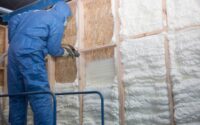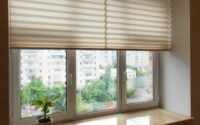You may have assumed that seasonal allergies or a minor cold caused itchy eyes, coughing, or sneezing, but what if you were reacting to mold? Many people are concerned about mold or fungus in their homes. It is terrifying to think that something living in your house and on your walls could be harming your health and causing damage to your property.
Mold in your home can cause various serious health problems you may be unaware of. Because mold can be found almost anywhere, everyone, no matter where they live, is at risk of toxic mold exposure.
How does indoor mold affect your health?
Indoor mold is not only unsightly and unpleasant to smell, but it also impacts the air quality in your home. Molds reproduce by releasing tiny spores that the naked eye cannot see. Spores fly through the air and land on surfaces searching for water to grow. Mold spores can survive in almost any environment, including those where mold cannot.
One of the most common toxic types is black mold (Stachybotrys chartarum). However, many molds appear black. Mold can be dangerous to your health. You should not take any chances if you believe you need the services of a mold removal specialist like PuroClean Disaster Response. Mold in large quantities is a major health risk, not to mention the damage it can do to organic building materials like wood throughout your home.
How to Keep Mold at Bay
To prevent mold growth in structures, understand how mold grows. Consider beginning on the outside. What are the environmental conditions that prevent mold from growing? The air is still moving.
Because there is so much ventilation, the concentration of mold and mold spores is less likely to reach a dangerous level. Outside, due to the vastness of the environment and the constant blowing of the wind, it is challenging to achieve mold concentration. You must keep ventilation in mind in your home. Click here for more information.
Mildew on Carpet
Just because mold is not immediately visible on the surface of a carpet does not mean that it is not growing. If you think mold is growing in your carpet, you must remove it immediately. Area rugs and wall-to-wall carpeting can provide an ideal breeding ground for mold if the conditions are right. Identifying mold in carpet or mildew in your home begins with determining its exact location and depth. Mold on a rug usually indicates that it should be discarded. That means the best way to combat carpet mold is to avoid it in the first place.
What is the source of mold growth?
Mold begins to affect you only at high concentrations. As a result, there is far less air movement within your home’s walls than outside, and even the largest homes are not considered “vast” compared to their area outside. That is, a house reduces ventilation, which keeps mold spores flying around and away from you while also confining them to a small space. When mold becomes a problem, there is a high concentration of mold spores in your home.
These spores seek out and adhere to a source of moisture. The dust or material on which the spores land becomes a source of food. The spore grows into the mold, and the mold colonies spread more mold spores throughout the house. The HVAC system, as well as your vacuum and anything else that moves around the house, helps spread the spores. Mold spores eventually find suitable environments and multiply into millions of new mold spores.
Mold removal is a multi-step process.
- Remove all sources of moisture.
- Improve ventilation
- Take out the mold.
- Maintain vigilance over the situation.
Conclusion
If you are anxious about mold in your home, you can seek the help of certified mold remediation specialists. Most businesses will gladly answer any questions about the mold removal process. They have the expertise and training to detect even the most hidden mold, such as mold within walls or beneath tiles. After all, is said and done, the key to prevention is awareness. Watch for mold in your home and contact a professional as soon as you notice it to prevent mold from growing.








